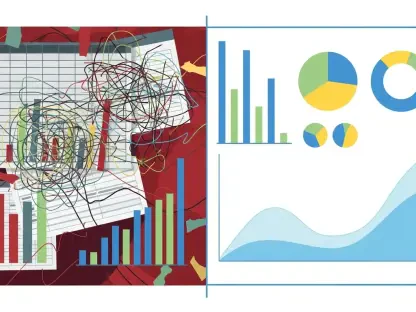In an era where national security hinges on the protection of sensitive information, security clearance holders bear an immense responsibility to safeguard classified data from unauthorized access or exposure, ensuring the integrity of critical operations. Whether dealing with government secrets, military intelligence, or proprietary materials, the consequences of mishandling such information can be catastrophic, ranging from compromised missions to personal repercussions like the loss of clearance. The strict guidelines set forth by frameworks such as the Security Executive Agent Directive (SEAD 4), particularly Guideline K, underscore the zero-tolerance stance on lapses in data protection. This article delves into practical strategies and critical principles that clearance holders must adopt to ensure the integrity of protected information. By exploring the risks, adherence to protocols, and the importance of accountability, the goal is to provide a clear roadmap for maintaining trust and compliance in high-stakes environments where every decision matters.
Recognizing the Dangers of Data Mishandling
Understanding the myriad risks associated with mishandling classified data is a foundational step for security clearance holders aiming to prevent breaches. Unauthorized disclosure, such as discussing sensitive details in unsecured locations or sharing them with individuals lacking proper authorization, poses a severe threat to national security. Equally dangerous is improper storage, where leaving classified documents unsecured or using personal devices for such data can create vulnerabilities ripe for exploitation. These risks are not mere hypotheticals but real concerns highlighted by Guideline K, which identifies any deviation as a potential indicator of unreliability. Awareness of these dangers fosters a mindset of vigilance, ensuring that every action taken with classified information prioritizes its protection. Clearance holders must internalize that even seemingly minor oversights can have outsized impacts, making risk recognition an essential component of their daily responsibilities.
Another critical aspect of risk awareness involves identifying less obvious but equally damaging behaviors that can compromise data security. Accessing information beyond one’s designated need-to-know scope or failing to secure restricted environments, such as a Sensitive Compartmented Information Facility (SCIF), can lead to unintended exposure of sensitive materials. Additionally, neglecting to follow transmission protocols, like sending classified data through unsecured channels, heightens the likelihood of interception by unauthorized parties. Guideline K emphasizes that such actions, whether deliberate or accidental, reflect poorly on a holder’s judgment and reliability. By thoroughly understanding these nuanced risks, individuals can proactively adjust their habits and decision-making processes to align with security expectations. This comprehensive grasp of potential pitfalls serves as the first line of defense against breaches that could undermine both personal standing and broader national interests.
Adhering to Strict Security Protocols
Compliance with established security protocols forms the bedrock of protecting classified information for those with security clearances. This entails securing materials in approved storage systems, utilizing only designated communication channels for sensitive data, and strictly prohibiting personal electronics in restricted areas. These measures are not suggestions but mandatory requirements designed to eliminate vulnerabilities that could be exploited. Consistent adherence to such rules not only prevents breaches but also builds a culture of accountability among clearance holders. Under Guideline K, any lapse in following these protocols is viewed as a serious concern, potentially jeopardizing eligibility for continued access to classified information. By treating these standards as non-negotiable, individuals demonstrate their commitment to safeguarding national security and maintaining the trust placed in them by governing authorities.
Staying current with evolving security policies and training is another vital element of protocol adherence that cannot be overlooked. Security measures and guidelines often update to address emerging threats or technological advancements, and falling behind can lead to unintentional violations. Clearance holders must actively seek out the latest training sessions and policy briefings to ensure their practices remain compliant. If any aspect of a protocol seems unclear, reaching out to supervisors or security officers for clarification is a proactive step that reflects responsibility. Such diligence helps prevent mistakes born from misunderstanding or outdated knowledge, which could otherwise result in severe consequences. Moreover, demonstrating a willingness to stay informed and adapt to new requirements signals a dedication to upholding the highest standards of data protection, reinforcing reliability in the eyes of adjudicators and peers alike.
Embracing Accountability Through Self-Reporting
Even with the utmost caution, human error can occasionally lead to lapses in handling classified data, making accountability a cornerstone of maintaining clearance eligibility. If an incident occurs—such as inadvertently leaving a document unsecured or transmitting information through an unapproved channel—prompt self-reporting is essential. This transparency shows a commitment to integrity and a readiness to address the mistake head-on. Under Guideline K, self-reporting can act as a mitigating factor during adjudication, potentially reducing the severity of repercussions on one’s clearance status. By immediately notifying the appropriate authorities and documenting the incident, clearance holders can limit the damage and demonstrate that the error does not reflect a broader pattern of negligence. This approach underscores a dedication to national security over personal convenience or fear of consequences.
Conversely, attempting to conceal a violation or failing to report it promptly often exacerbates the situation and erodes trust with adjudicators. Hiding an incident suggests a deeper lack of reliability or judgment, which can weigh heavily against an individual during evaluations. Guideline K case studies consistently show that transparency is rewarded, while obfuscation leads to harsher outcomes. Taking ownership of mistakes, seeking immediate remediation, and showing a clear intent to improve practices can significantly mitigate concerns. Accountability extends beyond avoiding penalties—it serves as a testament to an individual’s resolve to protect classified information at all costs. By fostering a mindset of honesty and responsibility, clearance holders not only safeguard their own standing but also contribute to a broader culture of trust and security within their organizations and the government at large.
Building a Future of Unwavering Data Security
Reflecting on past efforts to secure classified information, it’s evident that the journey for security clearance holders demands constant vigilance and strict adherence to protocols. Mishandling data, whether through unauthorized disclosure or improper storage, is consistently addressed with a firm stance under Guideline K, leaving little room for error. Yet, the emphasis on accountability and self-reporting provides a pathway for redemption when mistakes are owned and corrected swiftly. Looking ahead, the focus must shift to strengthening preventive measures—ensuring that training programs are robust, policies are clearly communicated, and resources for clarification are readily accessible. Encouraging a proactive mindset among clearance holders to anticipate risks and stay updated on evolving threats will be key. By embedding these practices into daily routines, the foundation for uncompromised data security can be solidified, protecting national interests for years to come.









